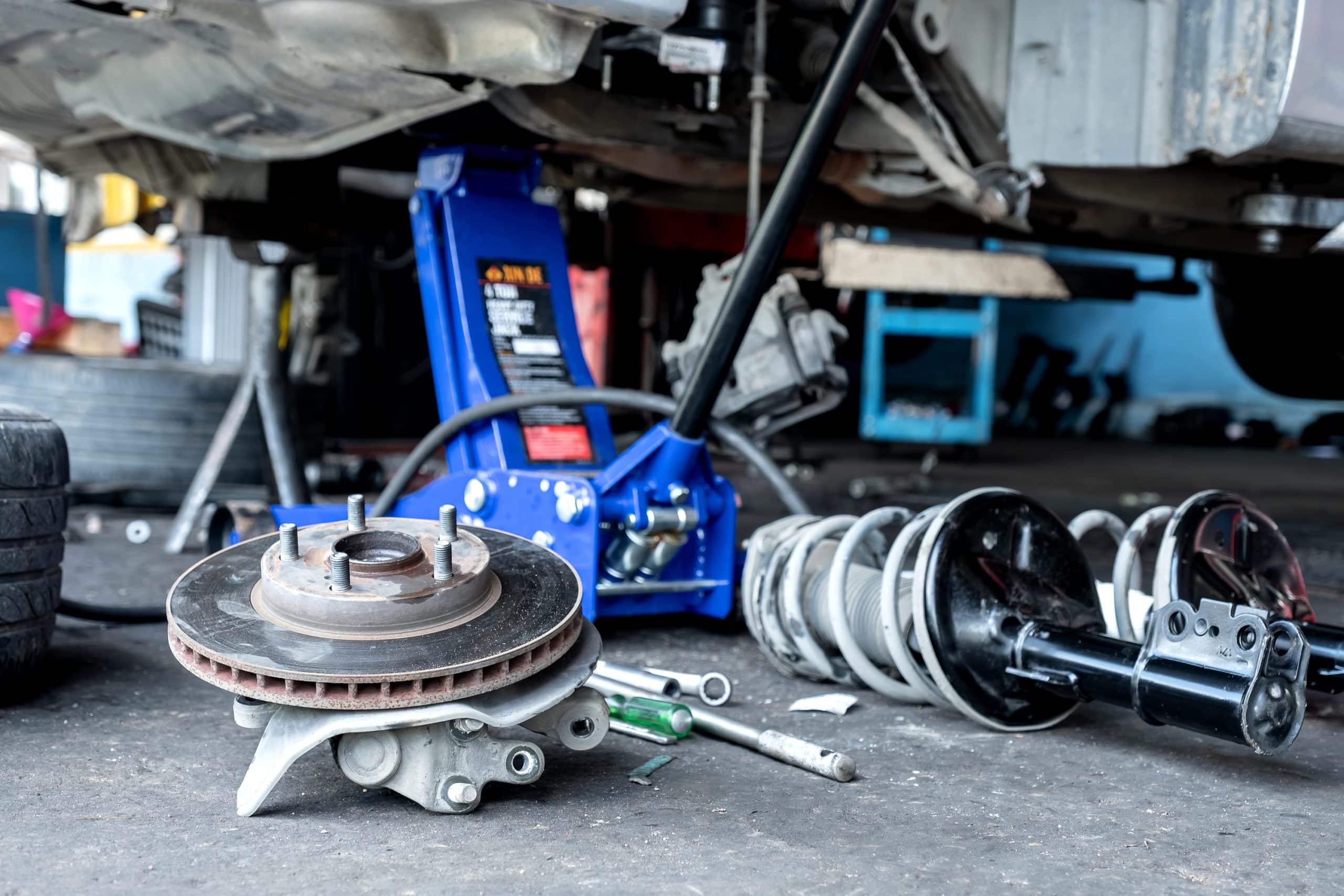The Honda Accord Euro R is a magnificent car, well-designed and engineered for optimum performance on the road. However, the true potential of this vehicle is realized when it is on the track, invoking a heightened sense of adrenaline rush within the driver. Tuning the suspension for track use can enhance the overall handling of the Accord, making it an even more impressive piece of machinery. In this article, we will dissect the various ways to effectively tune the suspension of a Honda Accord Euro R for track use.
Understanding the Stock Suspension Structure
Before diving into the process of tuning, it’s crucial to understand the stock suspension structure of the Honda Accord Euro R. The car’s suspension is primarily composed of the chassis, body, springs, and the rear suspension system, among other parts. These parts work in harmony to ensure smooth handling, but in their stock form, they might not be suited for the increased demands of track driving.
A lire également : How to Choose the Right Aftermarket Performance Exhaust for a Dodge Ram 1500 Hemi?
The stock springs of the Accord are designed to provide a comfortable ride for everyday driving. They are usually softer and have more give, which can lead to more body roll during high-speed cornering. The rear suspension, on the other hand, is designed to absorb shocks and maintain the car’s balance.
The chassis and the body of the car, in their stock form, provide stability and strength. However, under the high-intensity environment of a track, these parts may require additional reinforcement to withstand the pressures and provide better handling.
A lire également : What’s the Ideal Wheel Alignment Specification for a Modified Vauxhall Astra VXR?
Choosing the Right Parts for Suspension Tuning
Suspension tuning involves upgrading and tweaking various aspects of your Honda Accord’s suspension system. The right parts can significantly transform your car’s handling, making it more responsive and better equipped for the track.
Firstly, consider upgrading the stock springs to stiffer, performance-oriented ones. Performance springs are designed for improved handling and reduced body roll, which is ideal for track use. They also lower your car’s center of gravity, further enhancing its stability.
Next, consider upgrading the rear suspension. A performance-oriented rear suspension system will provide better control over the car’s movements, especially during high-speed cornering and braking.
The chassis may also benefit from reinforcement. A strut tower brace, for example, can increase the rigidity of your car’s body, reducing flex and offering better handling.
Adjusting the Suspension for Optimum Performance
Once you have the right parts in place, the next step is to adjust the suspension for optimum performance. This is where you will fine-tune the handling of your Accord to your likes and the specific demands of the track you’ll use.
The suspension settings of a car can drastically affect its handling. Therefore, don’t simply stick to the default settings. Experiment with different configurations until you find what works best for your driving style and the track’s layout.
You may need to adjust the camber, which is the angle of the wheels in relation to the road. A negative camber, where the top of the wheels are angled inwards, can enhance cornering performance.
Moreover, you can tune the spring rate and the damping of the suspension. A higher spring rate leads to stiffer springs, which can offer better handling but at the expense of comfort. The damping, on the other hand, controls how quickly the suspension springs back after a bump.
Regular Maintenance and Checks
Regular maintenance and checks are essential to ensure your tuned suspension continues to perform optimally. The high-intensity environment of a track can put a lot of stress on the suspension parts, potentially leading to wear and tear.
Ensure the springs are in good condition and replace them if necessary. Regularly inspect the rear suspension for any signs of damage or wear. Pay close attention to the shock absorbers and the bushings, which are prone to wear out faster in a performance setting.
The chassis and the body of the car should also be inspected regularly. Look for signs of stress or cracks, especially after a race. Remember, an efficient suspension system relies on a sturdy body and chassis.
In conclusion, there are numerous ways to tune the suspension of a Honda Accord Euro R for track use. From choosing the right parts to adjusting the settings, each step can incrementally enhance your car’s handling. With proper maintenance and regular checks, your tuned suspension will deliver exceptional performance on the track. The key is to understand your car and the track well, and tune accordingly.
The Role of Sway Bars, Control Arms and Lowering Springs
Getting the maximum out of your Honda Accord Euro R on the track involves more than just upgrading your springs and rear suspension. Other components that play a crucial role in improving your car’s handling include sway bars, control arms, and lowering springs.
The sway bar, also known as the anti-roll bar, is an integral component that helps in mitigating body roll during high-speed cornering. Upgrading to a stiffer sway bar can dramatically decrease the degree of body roll, leading to a more stable and responsive ride.
Control arms are the hinged suspension links between the chassis and the suspension upright or hub that carries the wheel. Upgrading your control arms can significantly improve handling and cornering performance. Performance control arms are designed to work in conjunction with the suspension system, providing a better grip and enhanced maneuverability.
Lowering springs, as the name suggests, lower your vehicle’s ride height. This in turn lowers the center of gravity, thereby improving handling, especially in corners. Lowering springs can also reduce drag and improve fuel efficiency.
It is essential to remember that these changes should be made while considering the specifications of the track you will be using. For instance, a track with more turns would require a greater emphasis on the sway bar and control arms to improve cornering, while a track with long straights would benefit from lowering springs to reduce drag.
Tuning the Suspension According to the Track and Environment
The environment and track conditions play a significant role in tuning the suspension of your Honda Accord Euro R. Every track is unique, with varying degrees of turns, elevation changes, and surface conditions. Understanding these factors can help you fine-tune your suspension for optimal performance.
For instance, a track with many tight turns would benefit from a softer suspension setup to allow for more body roll and better grip. Conversely, a track with high-speed straights would require a stiffer suspension setup to reduce body roll and improve lateral stability.
The weather is another important factor to consider. Wet or slippery conditions would require adjustments to your suspension settings to maintain traction and control.
Remember to drive a few laps on the track to get a feel of how your vehicle handles. This will give you a first-hand experience of how your suspension setup is performing and whether you need to make further adjustments.
Lastly, don’t forget to account for the weight distribution in your car. The placement of heavy items can significantly affect your car’s handling. It’s recommended to keep the weight centralized to maintain a balanced vehicle.
The Takeaway
To conclude, tuning the suspension of a Honda Accord Euro R for track use involves a careful consideration of various factors – from understanding the stock suspension structure to upgrading the right parts and making the necessary adjustments. Remember, your aim is to enhance the handling of your car, making it more agile, responsive and stable on the track.
It’s crucial to tune the suspension according to your driving style, the track’s layout, and the weather conditions. Regular maintenance and checks are also vital to ensure your suspension continues to perform optimally.
While it might seem daunting at first, with time, understanding, and practice, you’ll be able to optimize your suspension for peak track performance. After all, the thrill of racing is not just in the speed, but also in the art of perfecting control and handling. So, get behind the wheel, feel the adrenaline rush and enjoy the drive. Because, at the end of the day, it’s all about having fun and enjoying the ride.






